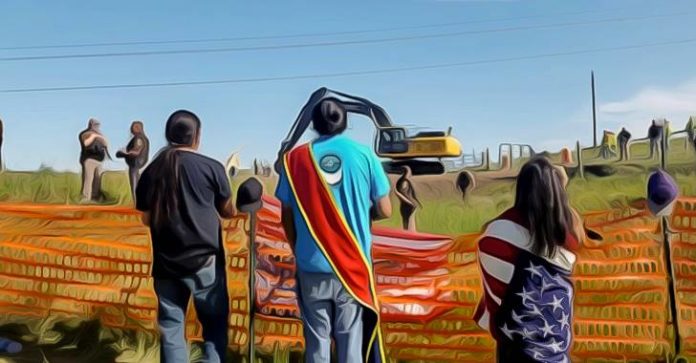
By Carey Wedler at theantimedia.org
When it comes to brute force, law enforcement and private security currently have the upper hand on the ground in Standing Rock, North Dakota. They’re employing armored vehicles, riot gear, tasers, rubber bullets, pepper spray, sound cannons, and other shows of force against peaceful opposition to the Dakota Access Pipeline.
But unlike most of the corporate media, the Internet is taking note of the struggle at Standing Rock and is trying to do its part to contribute to the protests. Over the weekend, unconfirmed reports emerged that police were using Facebook check-ins at Standing Rock to track individuals who arrived at the location to join water protectors.
As word spread of the apparent news, the Internet stepped up to neutralize the power of the police-surveillance state.
Shortly after, Facebook users from around the country and world began checking into Standing Rock, which registers as Cannon Ball, North Dakota, in an effort to confuse police. According to a statement many posters are copying and pasting:
“The Morton County Sheriff’s Department has been using Facebook check-ins to find out who is at Standing Rock in order to target them in attempts to disrupt the prayer camps. SO Water Protectors are calling on EVERYONE to check-in at Standing Rock, ND to overwhelm and confuse them. This is concrete action that can protect people putting their bodies and well-beings on the line that we can do without leaving our homes.“
Others merely checked in while still others added their own commentary. “If you are neutral in situations of injustice, you have chosen the side of the oppressor,” wrote Patrick Quinn below his check-in.
“Messing with fascists,” Luba Petrusha commented.
While the troll effort is exciting, it’s unclear whether the efforts are having an effect. According to Snopes, a self-described fact-checking blog whose conclusions are generally reliable, police claim they are not using Facebook to track protesters. Snopes reported “[a Morton County] officer explained not only that they were not using Facebook check-ins as a gauge of anything, but that the metric presented no intelligence value to them. The rumor suggested that protesters cited Facebook check-ins as a manner in which police could target them, but check-ins were voluntary — and if police were using geolocation tools based on mobile devices, remote check-ins would not confuse or overwhelm them.”
Snopes also claimed it spoke to protesters within a large camp at Standing Rock who said they did not issue a call to Internet users to check in. Nevertheless, they reportedly said they appreciated the show of solidarity.
Regardless of whether or not the online check-ins have any effect, the Internet has played a decisive role in the developing events in North Dakota. Livestreams have documented serious violations of free speech and the right to protest, and Facebook was accused of blocking such footage on at least one occasion. Amid the ongoing lack of mainstream coverage, the independent media has successfully drawn attention to the Standing Rock protests.
Considering the establishment has come out in full force in North Dakota, from their use of surveillance to their haphazard employment of heavily armed police, the increasing number of check-ins at Standing Rock shows just how much technology empowers people.
Even if police aren’t scouring social media and the check-ins fail to produce any tangible result, the rapid mobilization of efforts highlights a growing sense of opposition to unjust and exploitative power — and thanks to the Internet, the world is watching.
This article (Here’s Why Everyone on Facebook Is Checking into Standing Rock, North Dakota) is free and open source. You have permission to republish this article under a Creative Commons license with attribution to Carey Wedler and theAntiMedia.org.





Everybody has right to clean water